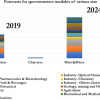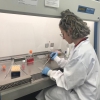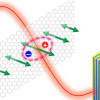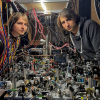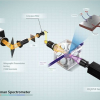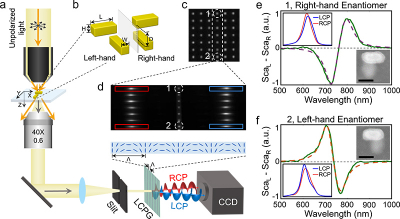
The 3D conformation of a molecule or nanostructure determines its function. For instance, a left-handed amino acid can be beneficial to health, while its right-handed compartment can be toxic. With today’s optical imaging techniques, one can accurately locate a molecule or a nanostructure, but resolving its 3D interior structure requires additional spectroscopic information—CD spectroscopy is the most widely used techniques for this purpose. If one can combine CD spectroscopy with an imaging method, real-time tracking and analysis of individual functional nano-units will become possible. This could lead to many important applications in the field of nanoscience and biology.
However, current CD spectrometers rely on the polarisation modulation of excitation light and require sophisticated multi-step measurements, holding the potential of CD spectroscopy from being fully released. To address this issue, a team of scientists, led by Prof. Weihua Zhang and Prof. Yanqing Lu from the College of Engineering and Applied Sciences, Nanjing University, China developed a polarisation-dispersive imaging CD spectrometry technique. The new method operates on the signals instead of the excitation light with the help of a nano-patterned liquid-crystal polarisation grating (LCPG). The LCPG can disperse the left-/right-handed circularly polarised components of optical signals to different directions with equal efficiency (overall diffraction efficiency >95 % at optimal wavelength), allowing them to capture the CD spectrum with a single shot. With the new technique, they studied a model system, namely the coupled plasmonic nanorod pair using the Born–Kuhn model and theoretically proved that the new method is equivalent to conventional CD spectroscopy when non-polarised excitations are used.
The key component of the new CD spectrometer is the LCPG. Unlike conventional polarisation components, which are commonly difficult to calibrate and sophisticate to use, the LCPG is simple, accurate and robust. “The LCPG is an ideal solution for polarisation-related measurements. First, its accuracy is guaranteed by theory. Mathematically, the space-variant geometric phases for LCP and RCP light generated by the LCPG are conjugated. As the result, they are always split into the ± 1th order of diffractions with absolute equal efficiency. This polarisation dispersion behaviour is non-dispersive, accurate and highly efficient. Secondly, the LCPG is a mature technique, and high quality LCPGs can routinely fabricated in research labs. To be honest, we were surprised to see that it worked so well in the single nanostructure CD measurements.”
Another important part of single nanostructure CD spectroscopy is how to interpret the data and retrieve sample’s interior 3D structural information. The paper studied a special case, coupled plasmonic nanorods, and showed that the geometrical parameters are explicitly related to the spectral features. Meanwhile, the scientists pointed out that the spectrum interpretation can be much more complicated:
“A single nanostructure’s CD spectrum is very different from the result of ensembles. In addition to the interior of the nanostructure, the spectrum is also related to its orientation, as well as the detailed excitation and observation geometries. To fully understand the complexity, more comprehensive theories are needed. We are currently working on it.”
Finally, thanks to the near-unit diffraction efficiency of the LCPG, the polarisation-dispersive CD spectrometer is a perfect tool for weak signal measurements, e.g., the circular polarised luminescence or Raman scatterings from individual nanostructures. “Besides the plasmonic nanostructures, we also tested the polarisation-dispersive imaging spectrometer with single quantum dot luminescence, and the system works perfectly. We believe that it is even capable of doing single-molecule CD measurements. That is our big goal!”, said Prof. Zhang.








